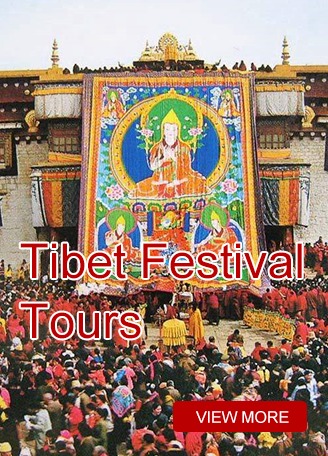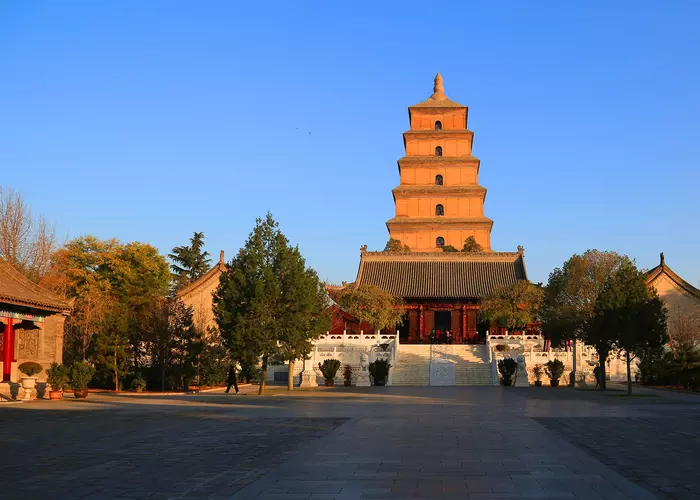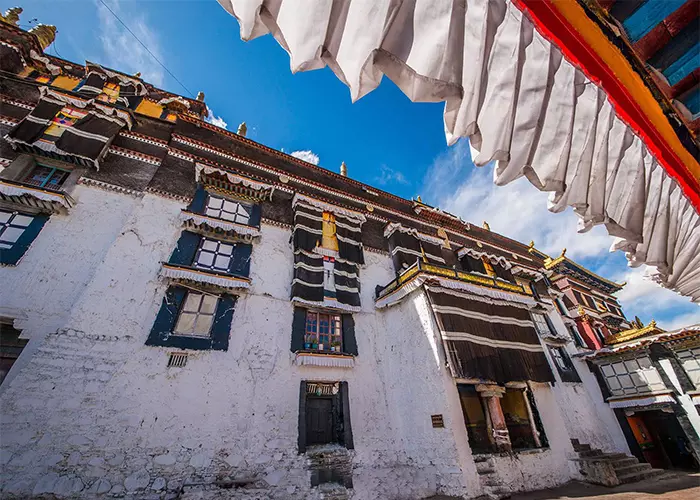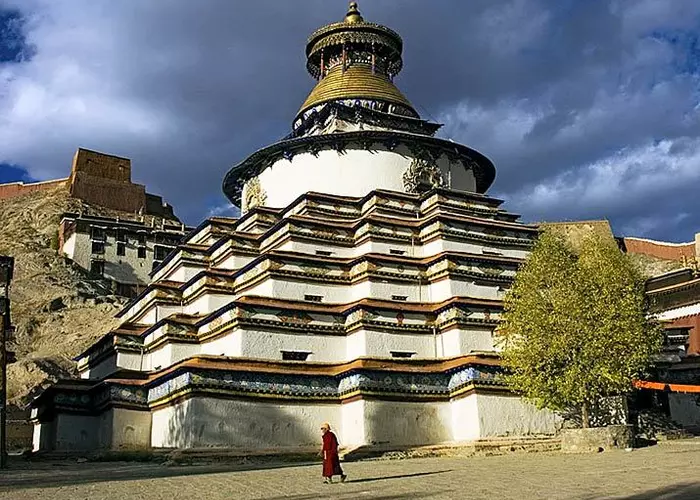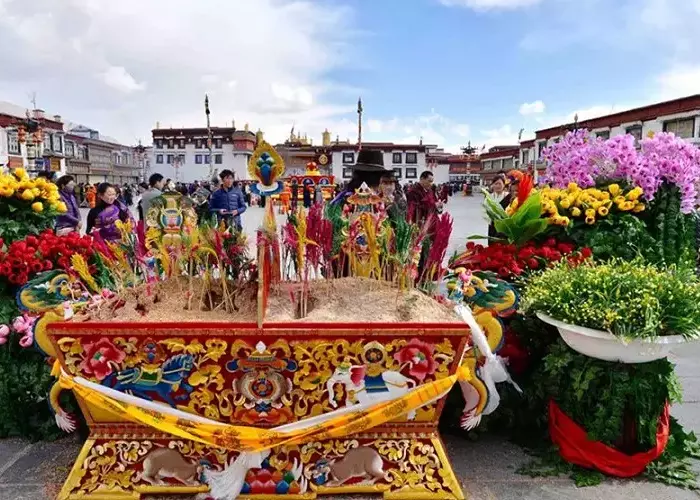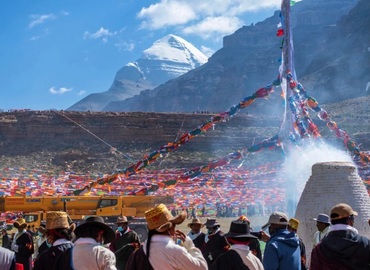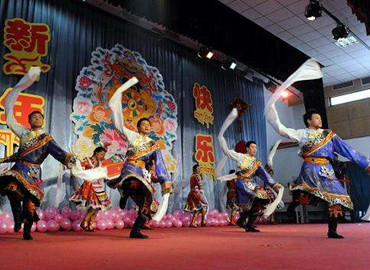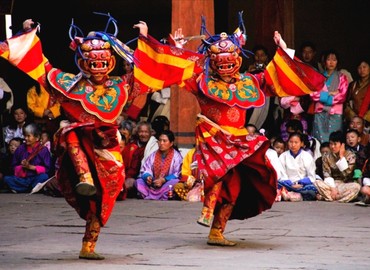Butter Lamp Festival
- Nance
- Last Updated : 11/19/2025
The Butter Lamp Festival is a traditional Tibetan Buddhist festival, also known as the Butter Lantern Festival. Tibetans call it "Chotrul Duchen". It falls on the 15th of the first month in the Tibetan Calendar, a full moon day, and closely follows Losar - the Tibetan New Year. In 2026, this festival falls on March 4th.
The Butter Lamp Festival was held by Tsongkhapa to celebrate the victory of Sakyamuni Buddha over his opponents in a religious debate. Each year, Tibetan Buddhist monasteries hold an exhibition of butter sculptures and light the butter lamp as a blessing. The most famous exhibitions are at the Jokhang Temple in Lhasa, Tibet, Kumbum Monastery in Qinghai, and Labrang Monastery in Gansu.
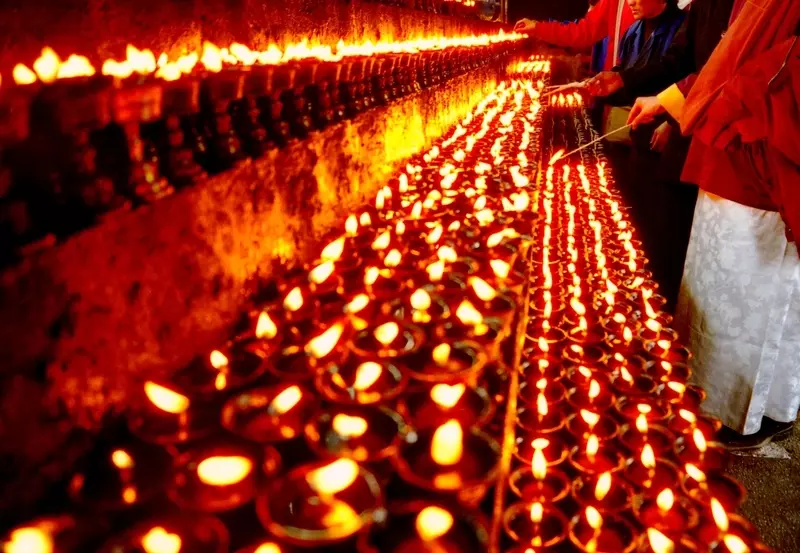
The History of the Butter Lamp Festival
The Festival began in the 7th year of Yongle in the Ming Dynasty (1409). It was created by Tsongkhapa, the founder of the Gelug Sect of Tibetan Buddhism, when he founded the Dharma Meeting in Lhasa on the fifteenth day of the first month of the Tibetan calendar. He offered butter flowers and Buddha lamps to the golden statue of Sakyamuni Buddha in Jokhang Temple in Lhasa to celebrate the victory of Buddha's debate with other sects. During that time, Tsongkhapa lit a lot of butter lights to commemorate the win. Soon after, tens of thousands of monks started coming together to celebrate it.
Today, the scale of celebration is smaller. Earlier, the festival also became a time for questions and answers with the highest-ranking monks. The Dalai Lamas would head to Jokhang Temple, but things have changed. The event is now being carried out in Dharamsala, where Dalai Lama ever lived. For the local Tibetans, it has become a time for being merry and celebrating festivities.
Tibetan Butter Sculptures
Tibetan Butter sculptures are widely used as offerings in Tibetan Buddhist monasteries. That is to use colored butter kneaded into the images of gods, figures, flowers, animals, and birds. Offering Buddha with butter sculptures can be dated back to the Songtsen Gampo period. In the middle of the 7th century, the statue of Sakyamuni, which Princess Wencheng brought to Tibet, was enshrined in Jokhang Temple. According to traditional Buddhist customs, there are six kinds of offerings to the Buddha and Bodhisattva, namely, flowers, Vilepana, holy water, incense, fruits, and Buddha lamps. But at that time, there were no flowers in the cold weather, so people had to use butter sculptures to make flowers to present to the Buddha.
>>View more about Tibetan butter sculptures
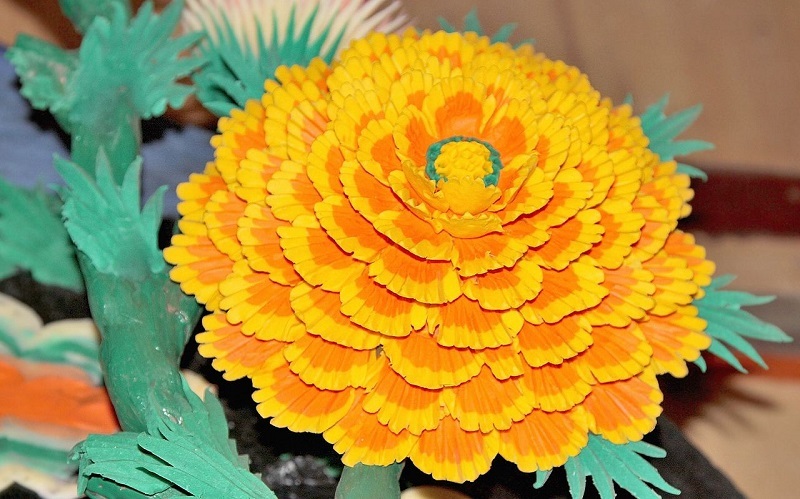
Butter Lamps
Butter lamp is traditionally burned with oil refined from yak milk. It is generally seen in Tibetan Buddhist temples and monasteries in the Himalayas. In Tibetan Buddhism, lamp offerings have the same merits as charity. Lighting a butter lamp signifies someone lights the inner wisdom within himself. What’s more, Tibetans and Buddhists consider the butter lamp as an essential part of meditation in tantras. A lot of lamps together can be beneficial towards achieving the focus of the mind. When burned, the butter lamps provide very smoky light. This smoky light is superbly mesmerizing.
What Happens in Celebrations
In the daytime, local Tibetans will visit monasteries like Jokhang Temple. They will burn incense and pray to Buddha there. The lamas and craftsmen made butter sculptures with different characters like gods, flowers, animals, etc. Some Tibetans even use a series of stories to make lanterns and tell us ancient Tibetan legends. Then, they will display these butter sculptures on the shelves and light them at night. It’s more of a party at night. With thousands of burning lights, they form a wonderful scene of meditation or hypnosis. The festival is probably the highlight of Tibetans, and the streets are filled with people dancing, singing, and celebrating. There's light everywhere from the butter sculptures and lamps. You will feel a happy atmosphere there.
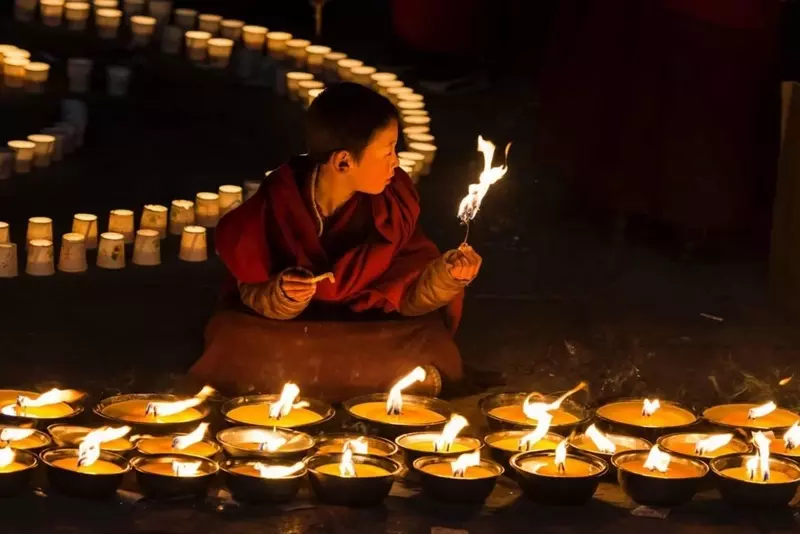
Barkhor Street, in the center of Lhasa City, is an interesting and breathtaking sight to see. To gauge the full experience of this event, it’s best to head straight here. The sculptures tell the stories of ancient times and are displayed beautifully throughout the city. The butter lanterns are set up on two to three-storied towers and brighten up the whole city till morning. The night becomes warm because of all the light. An all-around atmosphere of happiness and togetherness brings this event to an end every year.
This grand festival is the climax of a month-long preparation made by the Tibetans. It basically marks an end to the Lunar Festival. No better words can describe the feeling of being there unless you're there.
Recommended Tour Packages
Email response within 0.5~24 hours.


